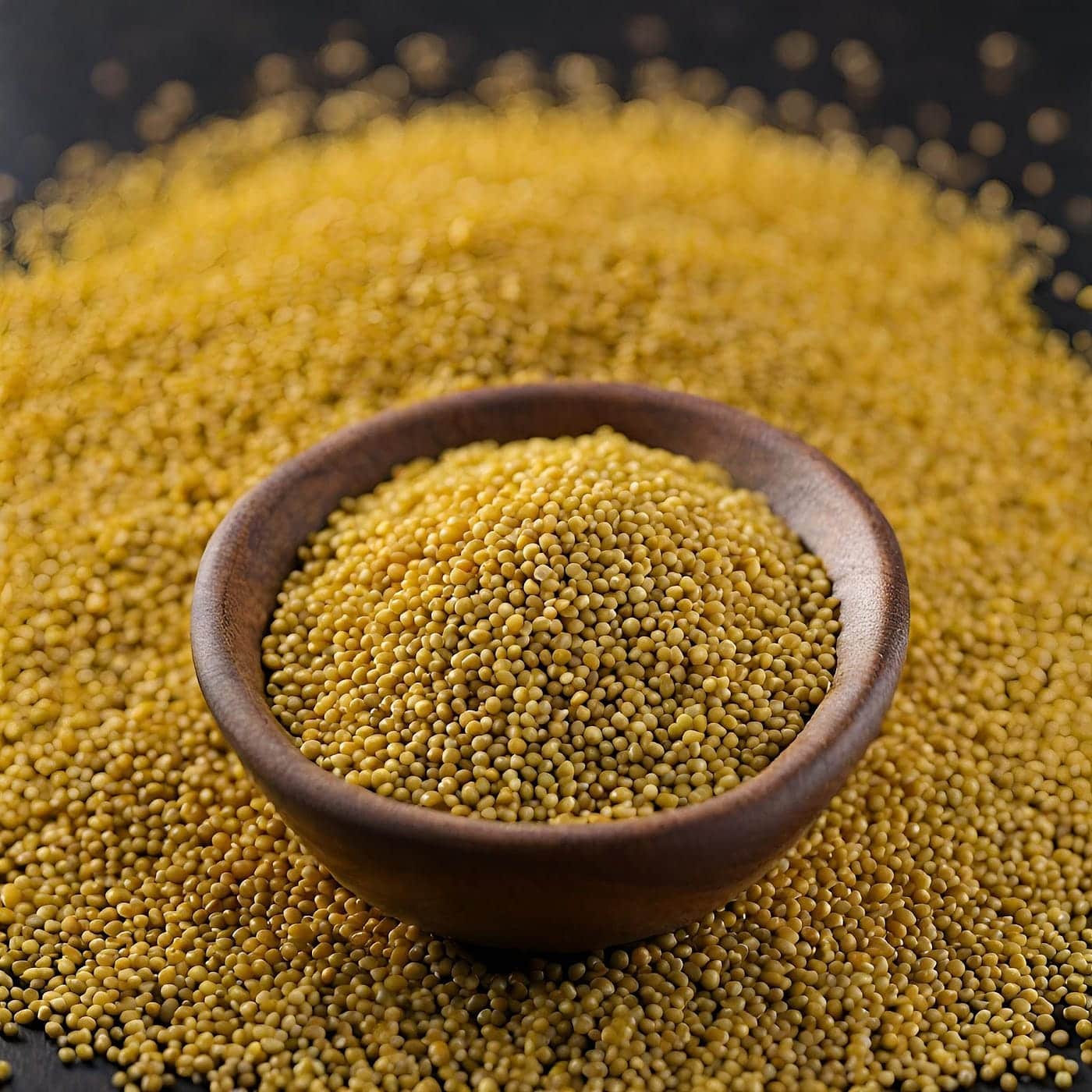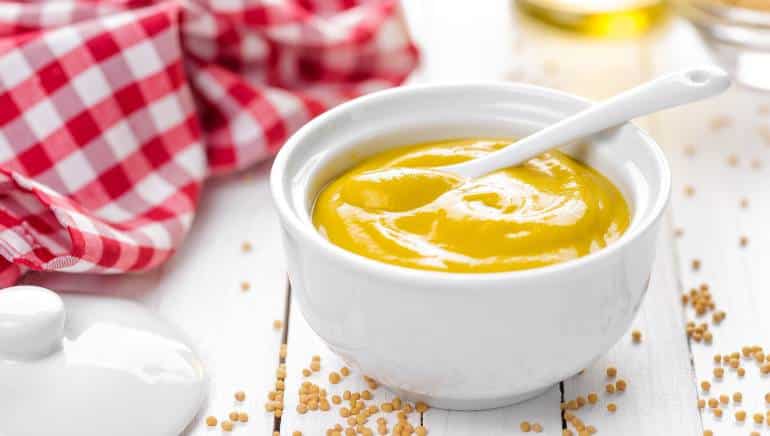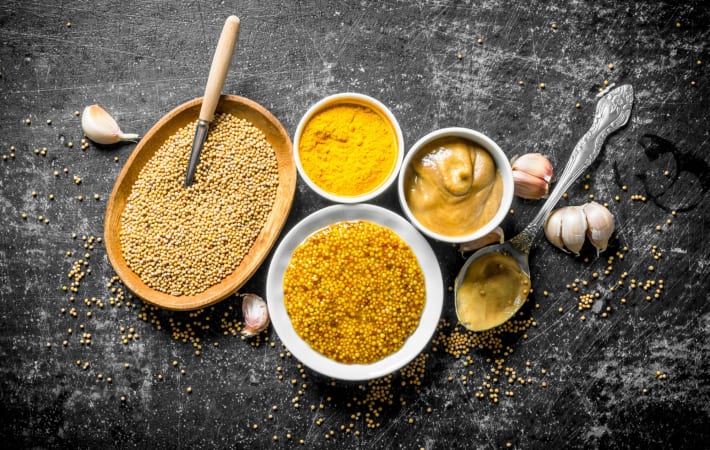Blog
What Indian dishes use mustard seeds?

Indian cuisine, renowned for its rich tapestry of flavors and diverse regional influences, features mustard seeds as a staple ingredient in a myriad of dishes. Mustard seeds, with their unique pungency and aroma, play a multifaceted role, contributing both flavor and texture to various culinary creations across the subcontinent. From the northern reaches of Punjab to the southern coast of Kerala, mustard seeds leave an indelible mark on the gastronomic landscape of India.
In the northern regions of India, particularly in Punjab, mustard seeds are a key player in the creation of classic dishes such as “sarson da saag.” This traditional Punjabi dish showcases mustard greens cooked to perfection, often accompanied by other leafy vegetables. Mustard seeds, when tempered in hot ghee or oil, release their distinct aroma and contribute a warm, earthy flavor to the saag. The resulting dish is a celebration of the winter harvest, capturing the essence of rural Punjab in a delightful and nutritious culinary experience.
Moving eastward, the state of West Bengal is renowned for its distinctive cuisine, where mustard seeds are a hallmark of many dishes. “Shorshe Ilish,” a Bengali delicacy, features hilsa fish bathed in a mustard sauce. The preparation involves grinding mustard seeds into a paste, combining them with green chilies and other spices, and smothering the fish in this flavorful mixture. The result is a dish that exemplifies the perfect marriage of the robust flavor of mustard seeds with the delicate taste of hilsa, creating a culinary masterpiece that is eagerly awaited during the hilsa season.
In South India, particularly in the states of Andhra Pradesh and Karnataka, mustard seeds find their way into various dishes, adding a distinct touch to the regional flavors. “Pesarattu,” a popular breakfast item in Andhra Pradesh, is a type of crepe made from green gram and rice batter, often spiced with mustard seeds during the tempering process. The inclusion of mustard seeds provides a subtle heat and aroma that complements the mild sweetness of the batter, creating a well-balanced and flavorful dish.
Moving further south to Kerala, “Kerala Sadya” – a traditional feast served on banana leaves – features several dishes where mustard seeds take center stage. “Avial,” a mixed vegetable curry, is tempered with mustard seeds, curry leaves, and coconut oil, imparting a distinctive South Indian flavor profile. The humble mustard seed, when combined with these regional ingredients, transforms the avial into a fragrant and delicious accompaniment to the rice-based dishes that dominate the Kerala Sadya.
In the western state of Gujarat, mustard seeds are a common component in the tempering of “dal,” or lentil dishes. “Gujarati Dal,” for example, is a sweet and tangy lentil soup tempered with mustard seeds, cumin, and asafoetida. The mustard seeds, when crackled in hot oil, infuse the dal with a warm and savory essence, elevating this comfort food to a delightful culinary experience. Additionally, “Kadhi,” a yogurt-based curry, often features a mustard seed tempering, adding depth and complexity to this iconic Gujarati dish.
The eastern state of Odisha boasts its own culinary gems where mustard seeds shine. “Dahi Baingan,” a dish featuring eggplants in a yogurt-based gravy, incorporates mustard seeds in the tempering process. The mustard seeds add a zesty kick to the dish, balancing the creaminess of the yogurt and enhancing the overall flavor profile. This is just one example of how mustard seeds play a crucial role in the diverse and delectable cuisine of Odisha.
In the heart of India, Madhya Pradesh, mustard seeds contribute their unique flavor to “Poha,” a popular breakfast dish made with flattened rice. Mustard seeds, along with cumin seeds, are tempered in hot oil, creating the foundational layer of flavor for this simple yet satisfying dish. The crackling mustard seeds infuse the Poha with an aromatic warmth, making it a comforting and beloved breakfast choice in the region.
As we venture to the northwest, the state of Rajasthan showcases its culinary prowess with dishes like “Gatte ki Sabzi.” In this Rajasthani specialty, gram flour dumplings are cooked in a spiced yogurt-based gravy, which is often tempered with mustard seeds. The mustard seeds, when added to the tempering, contribute a sharp and robust flavor that cuts through the richness of the yogurt, creating a dish that is both hearty and flavorful.
In the southern state of Tamil Nadu, “Rasam,” a tangy and spiced soup, often features mustard seeds in the tempering process. The mustard seeds, when crackled in hot oil along with other spices, release their aroma, enhancing the overall sensory experience of the rasam. This iconic South Indian soup is a testament to the versatility of mustard seeds, which effortlessly elevate even the simplest of dishes.
Beyond these regional specialties, mustard seeds are a common denominator in the vast array of Indian pickles, known as “achar.” Mango pickle, lime pickle, and mixed vegetable pickle are just a few examples where mustard seeds are a crucial component. The process of pickling involves tempering mustard seeds in oil and combining them with various spices to create a flavorful and preservative medium for preserving fruits and vegetables. Mustard seeds not only contribute to the taste but also play a role in the preservation of these pickles, showcasing their multifaceted nature in Indian cuisine.
our exploration of Indian dishes featuring mustard seeds, we journey to the northwest state of Punjab, where “Makki ki Roti and Sarson da Saag” is a quintessential winter delight. This traditional dish combines unleavened cornbread, or makki ki roti, with a saag made from mustard greens, tempered with mustard seeds. The earthy aroma and mild spiciness of mustard seeds infuse the saag, providing a distinctive flavor to this cherished winter specialty.
In the vibrant state of Maharashtra, “Puran Poli,” a sweet flatbread stuffed with lentils and jaggery, is a festive treat that incorporates mustard seeds in its tempering. The mustard seeds, crackled in ghee along with cumin seeds, enhance the richness of the dish, balancing the sweetness of the filling and creating a harmonious blend of flavors.
Moving to the Himalayan state of Himachal Pradesh, “Sidu,” a steamed bread stuffed with various ingredients, often features mustard seeds in its tempering. The use of mustard seeds adds a punch of flavor to the bread, elevating this regional specialty to a delightful culinary experience.
In the southern state of Karnataka, “Menthe Hittu” is a dish where mustard seeds take the spotlight. This flavorful chutney powder is made by roasting and grinding mustard seeds along with fenugreek seeds, lentils, and spices. Used as a condiment, it adds a burst of flavor to various dishes, showcasing the versatility of mustard seeds in South Indian cuisine.
Crossing over to the northeastern state of Assam, “Maasor Tenga,” a sour fish curry, is a staple where mustard seeds play a crucial role. The mustard seeds are ground into a paste and added to the curry, contributing not only to the flavor but also acting as a thickening agent. The pungency of the mustard seeds cuts through the richness of the fish, creating a dish that is both tangy and satisfying.
In the desert state of Rajasthan, “Ghevar,” a popular sweet dish made during festivals, features a unique syrup infused with mustard seeds. The mustard seeds, when crackled in hot ghee and added to the sugar syrup, lend a distinctive flavor that complements the richness of the deep-fried flour disc, creating a dessert that is both indulgent and aromatic.
Traveling to the coastal state of Goa, “Fish Curry Rice” is a staple where mustard seeds add their characteristic pungency to the curry. The mustard seeds are ground into a paste along with other spices, creating a flavorful base for the tangy and coconut-infused fish curry that is a culinary delight in this region.
In the central state of Chhattisgarh, “Chana Samosa,” a unique take on the traditional samosa, features a filling made with mustard seeds. The mustard seeds are tempered in oil along with other spices and mixed with boiled chickpeas, creating a flavorful stuffing for these delightful snacks.
Throughout India, mustard seeds are also a crucial component in the preparation of “Kadhi,” a yogurt-based curry that varies in flavor across different regions. In states like Gujarat and Punjab, where kadhi is a culinary gem, mustard seeds are an essential part of the tempering, providing depth and complexity to this comforting dish.
Finally, in the city of Mumbai, “Vada Pav,” a beloved street food, showcases mustard seeds in the spicy chutney that accompanies the potato fritter inside the pav (bread). The mustard seeds, when tempered with green chilies and curry leaves, create a zesty and piquant chutney that enhances the overall flavor of this iconic snack.
In summary, mustard seeds, whether tempering in a dal, enhancing the flavor of a curry, or playing a crucial role in pickles, are an integral part of Indian cuisine. Their ability to add warmth, depth, and a distinctive aroma makes them a versatile ingredient that transcends regional boundaries. From the northern plains to the southern coasts, mustard seeds weave a common thread, connecting the diverse culinary traditions of India and contributing to the vibrant and flavorful tapestry of Indian gastronomy.
FAQ:




